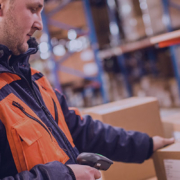Reverse logistics has become a tough challenge for businesses because of the rise in e-commerce and the demand for easy and free returns. Businesses that achieve hassle-free returns retain more customers and improve brand identity. Studies show that 92% of consumers say they will buy again if the product return process is easy, and 79% of consumers want free return shipping. Additionally, the reverse logistics market projects to grow. Studies estimate that the global reverse logistics market size expects to reach $937.1 billion in 2022. Studies show the costs of handling returns jumped 59% due to supply chain and labor issues last year.
Businesses could suffer from higher return, shipping, and handling costs when they fail to meet consumer expectations for seamless returns. Researchers suggest that moving backward through the supply chain is actually more difficult because there isn’t a priority for efficient returns and products move against the normal flow of products. Consider following these steps to ensure your return process is optimized:
- Know why your returns happen in the first place – Given the expense that comes with returns, you should try to find why consumers are returning items. Awareness of reasons for returns can help you determine if you have the right return policy and if it’s playing a role in a higher volume of returns.
- Put transparent monitoring systems in place – Implement innovative monitoring systems that monitor assets throughout the return process. When companies improve asset visibility during reverse logistics they find areas that need improvement and can work to improve quality.
- Implement clear and easy return policies – E-commerce has created specific customer expectations for purchasing, and in this case, returning products. Since consumers are expecting free and same-day shipping, create a simple return process that can meet or be close to these requirements.
- Invest in the right technology – In addition to an effective inventory management system, you can digitize inventory updates with handheld devices. Consistent digital updates to inventory counts help improve your accuracy and speed for reverse logistics. Mobile devices can help workers accurately read tags and labels to improve accuracy and speed during the return process.
- Add return labels on the original shipping and packaging – Just simply adding the right return labels can reduce delays dramatically, while simultaneously improving customer satisfaction. Enterprise labeling helps the product get back much more quickly and helps the customer, which improves efficiency in the entire return process.
Visibility into the return process, clear and easy returns, dependable technology, and correct labeling can give your business what it needs to optimize reverse logistics. Simple solutions like this make the return process more valuable and cost-efficient.
A return process should be as simple and efficient as a delivery process. Learn more about what you can do to optimize reverse logistics and supply chain efficiency.











